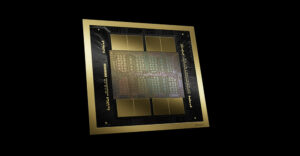
I spent last week at the annual Intel analyst conference and was impressed by what I saw, but I started connecting the dots between what Apple is doing with the iPad, Google is doing with the Nexus one, Microsoft is doing with the Zune and Xbox, and Intel is doing with its Atom/Moblin efforts, and I had an epiphany.
I checked my meds and confirmed I hadn’t missed any anti-epiphany medication I was supposed to be taking and concluded that the PC model that created the market appears to be dying, and that we simply may be waiting for a definitive moment to say it is dead.
In addition, last week a tablet computer was launched that could quite literally crush the iPad, and in many ways is superior to it: the H1 field tablet from Panasonic. Since this product has already launched, is vastly different, and actually exists in final form, I figured I’d make it my product of the week.
The Birth of the PC Model
Let’s go back in time a bit to the 80s, when Apple was focused on taking computing from hobbyists to consumers and got its butt kicked by Commodore, which did a better job targeting those consumers. The appliance-PC model was eclipsed by a model IBM and Microsoft set up, which established the basis for the dominant standards-based PC model.
This model set standards for all of the components in the PC, initially even including the processor socket, allowing competition in all hardware areas. The only thing that was consistent was the operating system, and Microsoft took over from IBM as the controlling authority in the early 90s by tromping on OS/2 and setting the stage for what was a massive reduction in cost and a massive increase in sales.
It was so powerful it helped take out Commodore, which had been dominant for much of the 80s, and it forced Apple to adopt a somewhat similar model, going as far as cloning before Steve Jobs returned and stopped that effort. However, Apple continued on the standard hardware path, at least for PCs — and inside, Apple PCs and Windows PCs currently use pretty much the same stuff.
IBM eventually exited the segment, Intel took the socket in a proprietary direction, and Microsoft pretty much abandoned its role in favor of turning Windows into a product. Coming into the last decade, the model began to crumble.
The Era of Specialization
In many ways, the PC model mirrored the current industrial age. Companies specialized, rather than build an entire product, and a general contractor — the PC OEM — put the stuff together to build the actual computer. This allowed for very rapid price drops and rapid increases in technology, but it also increased the complexity of the solution substantially.
Eventually, the standards process — getting all of the needed approvals to move forward — became a fight between competitors who often seemed more interested in making sure the other guy’s better technology didn’t get the nod than in advancing the platform. Over the last decade, things didn’t advance very much either on the Windows or the Apple side.
I still think the second-generation iMac is a more advanced design then the current generation all-in-ones — and laptops have been pretty much stuck in a design rut since 1995. Corporate sales have all but stopped, and I can’t remember the last time anyone was as excited about a PC as they are now about the Apple iPad or a new iPhone. Probably back when the Mac first launched.
The Death of the PC Model
Let’s start with Apple and the iPad. Given how painful it was for Apple to change from a model where virtually the entire system was uniquely its own to a standards-based system using Intel — even the OS was only a unique Apple UI on top of a Unix shell — you’d think it would be the last to abandon it. But if you look at the iPad, it takes Apple back to the beginning of the PC, in that it has an Apple-designed processor and is highly vertically integrated, even though it is still physically assembled by a contract manufacturer.
Flip to Microsoft, which applied its own chip design capability to the Xbox when it shifted from using the PC to compete with game consoles to building one itself. In effect, the Xbox is a Microsoft-branded PC with an operating system it won’t license to anyone else going places where originally PC extenders and PC media centers were intended to go. PC gaming has nowhere near the backing it once had, and Microsoft’s attempt to take the PC model to MP3 players — called “Plays for Sure” — was replaced by another vertically integrated effort branded “Zune.”
Currently, Microsoft has a rumored iPhone-killer platform called “Pink” that some expect it to use to launch its own vertically integrated Zune phone. I doubt that it’s coming this year, but the pieces are clearly in place. On the PC side, the Microsoft stores will feature products built to Microsoft specifications, even though they will carry OEM brands. For many, the difference between the PCs in those stores and a Microsoft-branded product may be only in the name.
With its Atom and software units, Intel basically has all of the components — including an operating system based on Linux but altered to make it unique to Intel — for what appears to be a vertically integrated attempt to create better smartphones and iPad-like tablets. The Intel-sourced parts include everything but the memory, battery, display and case design.
While not yet branded by Intel — and clearly Intel intends at this point to never brand the result “Intel” — it does make for a highly vertically integrated platform. For some of the resulting products, what separates them from being an Intel-branded offering may only be the lack of an “Intel” product name on the case.
Google, ever the disruptive influence, has brought out the Nexus One as a Google phone. Built by HTC but under a tight Google specification, this is similar to what Microsoft is doing in the stores — but with a “Google” brand. This isn’t Google being disruptive; in this case, it appears to be going with the flow, and that flow isn’t using the complex PC model.
Wrapping Up: What Does This Mean?
I think it means the PC experiment has run its course. It did have a number of advantages in terms of dropping price and initially getting technology to the masses, but the standards process slowed it substantially, and innovation often became more of a joke then reality.
In addition, the customer experience really suffered — and when the PC vendors thought crapware was a good idea, things had clearly gone out of control. This new approach more clearly defines customer and customer satisfaction ownership.
Apple’s financial performance demonstrates the approach can be successful, and the eventual result should be both healthier companies and happier customers. Still, getting there is likely to be rather painful for those who don’t see this trend coming soon enough and fail to execute on it sharply.
So, the PC model may effectively be on life support, but its departure will likely lead to something better — and better is something I think we all can get behind.
Product of the Week: The Panasonic H1 Field Tablet

Panasonic is the one Windows PC vendor that is as highly customer-focused and even more vertically integrated (at least with PCs) then Apple.
Granted, it goes after the industrial market, not the consumer market, so most of you have not seen or used a Toughbook — but it makes PCs that are used by folks whose lives depend on them. Not cheap, but quite literally solid as a rock.
Panasonic’s H1 field tablet is no iPad — it is targeted at emergency response professionals. In other words, you may not use it to read a book, but someone else may use it to save your life.
With a magnesium-alloy case and able to meet MIL-STD-810G military standards, this product could literally crush an iPad while running and not feel the impact. It has a 10.4-inch anti-glare dual touch (the iPad is supposedly dual not multitouch) stylus-ready display, 64 GB enterprise grade solid state drive, and at US$4,000 fully loaded, it makes the fully loaded iPad look really reasonable.
But then, when your life depends on it, the extra cost is likely not a big issue. Toughbooks have been known to stop bullets.
I’ve often thought that if there were one company that could actually go after Apple successfully it would be Panasonic, but not with this product. The iPad and Panasonic H1 are clearly vastly different products targeted at vastly different customers, and both companies do a great job of meeting customer expectations.
The Panasonic H1 could save my life one day (and because it let me say “crush the iPad”) this puppy is my Product of the Week.
Rob Enderle is a TechNewsWorld columnist and the principal analyst for the Enderle Group, a consultancy that focuses on personal technology products and trends.






















































The moment you consider a Zune or XBox as a future-pointing factor, you should check your Epiphany monitor in addition to your meds.
The moment you say "appears to be dying" but fail to provide a time period in the same breath is a sign you should then triple check your meds and monitors.
Your conclusion that the Consumer Tech industry is moving away from "complex PCs" to function-specific vertical appliances is wrong.
What you are seeing is simply the advancement of the consumer market overall. PCs are not dying, consumer "gadgets" are just evolving. "Complex PCs" have never been the exact same feeding trough as phones and music players. That iPhone is the evolved rotary dial wall hanging kitchen phone, that Zune is an evolved Sony Walkman.
Sure, there will be more vertical appliances. And these will be increasingly more "computer-like", but there will also be "Integration Systems" to tie these things together for the consumer. There will always be businesses needing work-stations, and there will always be "power"/"advanced"/"hobbyist" enthusiasts buying complex systems.
Hardly. At $3300.00 compared to $500.00 i’d say not.
Replacement, for profit, of all in one systems, which where already hamstrung people people trying to control what hardware you had, and what was installed, with dozens different "specialty" devices, none of them cross compatible, none of them able to do everything, and only able to share, if at all, what the company selling them want you to share between them. In short, instead of buying a PC, and doing what ever you want with it, and **only** getting the specialty item, if you need one, you now have to buy a dozen different things, all which only do one thing actually well, none of which push the edge of technology, innovation, or new ideas nearly as hard as PCs have, and all beholden to the assumptions, expectations, and intentional limitations, placed on them by data carriers, manufacturers, software companies, and anyone else that wants to muck around with what you can actually use them for.
In short, it may be someone’s dream, but its not that of anyone that gives a frack about having "control" over their own purchases, or what they get to do with them. And Apple, with their, "You can’t install that, we didn’t approve it!!", BS is a prime example of where this "improvement", and the supposed death of the PC is going. What is needed is a solution to fix the issues PCs have, but that itself has been nearly abandoned, in this rush to make a special game system, you can’t upgrade, a special phone, you can’t upgrade, a special this, that, or other thing, **which you can’t upgrade**, and not one of which you can keep what you already have, if you buy a new one, since a) the new model won’t run the same programs, in many cases, and b) only what the company considers "important" can be copied.
No fracking thanks.